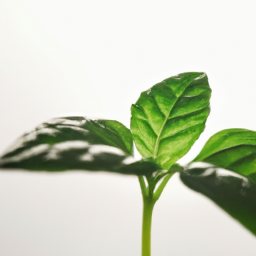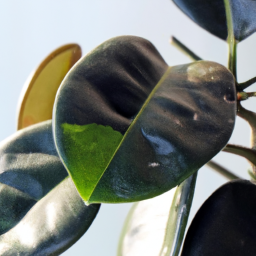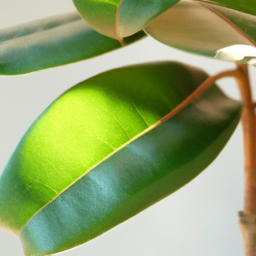
Have you ever wondered if indoor lighting can actually help plants grow? Well, you’re not alone! Many plant enthusiasts, especially those living in apartments or areas with limited access to natural sunlight, often turn to indoor lighting as a way to nurture their green friends. In this blog post, we will explore the question, “Will indoor lighting help plants grow?” and delve into the fascinating world of indoor gardening. Whether you’re a seasoned plant parent or just starting your journey, join us as we uncover the secrets behind using artificial light to support plant growth.
Will Indoor Lighting Help Plants Grow?
How Does Indoor Lighting Affect Plant Growth?
Indoor lighting plays a crucial role in the growth and development of plants. While natural sunlight is the best source of light for plants, indoor lighting can be a viable alternative, especially in situations where access to sunlight is limited. In this article, we will explore how indoor lighting affects plant growth and provide you with a step-by-step guide to help your plants thrive indoors.
The Importance of Light for Plant Growth
Light is an essential element for plants as it fuels the process of photosynthesis, which is vital for their growth. Photosynthesis is the process by which plants convert light energy into chemical energy, allowing them to produce glucose and oxygen. This energy is then utilized by the plants for various metabolic activities, including growth, flowering, and fruiting.
When plants receive insufficient light, their growth can be stunted, and they may become weak and leggy. Insufficient light can also lead to a lack of chlorophyll production, resulting in pale or yellowish leaves. Therefore, providing adequate light to your indoor plants is crucial to ensuring their overall health and vitality.
Now, let’s delve into how indoor lighting can help plants grow:
1. Choosing the Right Indoor Lighting
When it comes to indoor lighting for plants, there are several options to consider. The most common types of indoor lighting include fluorescent lights, LED lights, and high-intensity discharge (HID) lights. Each type has its own advantages and considerations, so it’s important to choose the one that suits your specific plant’s needs.
Fluorescent lights are a popular choice for indoor gardening due to their affordability and versatility. They come in various spectrums, including cool white, warm white, and full spectrum. Cool white fluorescent lights are ideal for promoting vegetative growth, while warm white lights are better suited for flowering and fruiting stages.
LED lights have gained popularity in recent years due to their energy efficiency and long lifespan. They are available in a wide range of spectrums, allowing you to customize the light according to your plant’s requirements. LED lights are particularly beneficial for small or compact spaces, as they produce less heat compared to other lighting options.
HID lights, such as metal halide (MH) and high-pressure sodium (HPS) lights, are commonly used for larger indoor gardens or commercial setups. MH lights emit a bluish spectrum that promotes vegetative growth, while HPS lights emit a reddish spectrum that enhances flowering and fruiting stages.
2. Understanding Light Intensity and Duration
When setting up indoor lighting for your plants, it’s crucial to consider both light intensity and duration. Light intensity refers to the amount of light energy reaching the plants, while duration refers to the number of hours the plants are exposed to light each day.
The light intensity required by your plants depends on their specific needs. Some plants, such as succulents and cacti, thrive in high light intensity, while others, like ferns and certain orchids, prefer lower light intensity. It’s important to research the light requirements of your specific plants to ensure optimal growth.
As for light duration, most plants require around 12 to 16 hours of light per day for healthy growth. However, some plants, especially those that are native to regions with shorter daylight hours, may require less. On the other hand, certain flowering plants may benefit from extended periods of darkness to trigger blooming.
3. Positioning the Lights Correctly
Proper positioning of indoor lights is crucial to ensure uniform light distribution and prevent any shading issues. The distance between the light source and the plants should be adjusted according to the light intensity required by your specific plants.
If the light source is too close to the plants, it can cause heat stress and damage the foliage. Conversely, if the light source is too far away, the plants may not receive sufficient light energy for optimal growth. It’s recommended to follow the manufacturer’s guidelines or consult a horticulture expert for the appropriate positioning of your indoor lights.
Additionally, consider rotating your plants regularly to ensure all sides receive adequate light. This will help prevent the plants from leaning or growing unevenly towards the light source.
By following these steps and understanding the impact of indoor lighting on plant growth, you can create a thriving indoor garden that brings beauty and greenery into your home. Remember to monitor your plants closely and make adjustments as needed to provide the best possible growing conditions.
Now that you have a comprehensive understanding of how indoor lighting affects plant growth, you can confidently embark on your indoor gardening journey. Enjoy the process of nurturing your plants and witnessing their growth and vitality!

Choosing the Right Indoor Lighting for Plant Growth
When it comes to growing plants indoors, one of the most important factors to consider is the type of lighting you provide. While natural sunlight is the best source of light for plants, it may not always be available or sufficient, especially in areas with limited sunlight or during the winter months. This is where indoor lighting comes into play.
The Importance of Light for Plants
Plants require light for the process of photosynthesis, which is essential for their growth and development. Light provides the energy needed for plants to convert carbon dioxide and water into glucose and oxygen. Without enough light, plants may become weak, leggy, and fail to produce flowers or fruits.
Indoor lighting serves as a substitute for natural sunlight and can help provide the necessary light energy for plants to thrive. However, not all indoor lighting is created equal, and it’s crucial to choose the right type of lighting for optimal plant growth.
Understanding Different Types of Indoor Lighting
1. Incandescent Bulbs: Incandescent bulbs are the traditional, inexpensive light bulbs commonly found in households. However, they are not the best choice for indoor plant growth. Incandescent bulbs emit a lot of heat and produce light that is heavy in the red spectrum but lacks blue light, which is essential for vegetative growth. They are better suited for providing supplemental lighting rather than being the sole light source for plants.
2. Fluorescent Lights: Fluorescent lights are a popular choice for indoor gardening. They are energy-efficient, emit less heat compared to incandescent bulbs, and provide a good balance of both red and blue light. Fluorescent lights come in different types, including T5, T8, and compact fluorescent lights (CFLs). T5 and T8 bulbs are ideal for larger indoor gardens, while CFLs are more suitable for smaller setups or specific plant types.
3. LED Lights: LED lights have gained popularity in recent years due to their energy efficiency and versatility. They provide a wide spectrum of light, including both red and blue wavelengths, which are crucial for plant growth. LED lights are available in various colors and can be customized to meet specific plant requirements. They produce less heat, making them a safe option for indoor gardening.
Factors to Consider When Choosing Indoor Lighting
1. Light Intensity: Different plants have varying light intensity requirements. Some plants, such as succulents and cacti, thrive in bright, direct light, while others, like ferns and orchids, prefer lower light levels. Consider the light intensity needs of your plants and choose lighting accordingly.
2. Light Duration: Plants also require a specific duration of light exposure. Most plants need around 12-16 hours of light per day for optimal growth. Some plants, like flowering plants, may require shorter day lengths to trigger blooming. Ensure you provide the right duration of light for your plants.
3. Light Spectrum: The light spectrum refers to the different colors of light emitted by a light source. As mentioned earlier, plants require both red and blue light for photosynthesis. Look for lighting options that provide a balanced spectrum or can be adjusted to meet the specific needs of your plants.
Tips for Using Indoor Lighting Effectively
1. Positioning: Place your indoor lights close to the plants, ensuring they receive sufficient light without causing heat stress. Adjust the height and angle of the lights as the plants grow to maintain an optimal distance.
2. Lighting Schedule: Use timers or smart plugs to automate your lighting schedule. This ensures your plants receive consistent and appropriate light exposure, even when you’re not around.
3. Monitor Plant Response: Pay attention to how your plants respond to the indoor lighting. If they start showing signs of stress, such as wilting, yellowing leaves, or stunted growth, adjust the lighting intensity, duration, or spectrum as needed.
Remember, indoor lighting is just one piece of the puzzle when it comes to successful indoor gardening. Proper watering, adequate ventilation, and suitable growing mediums are also essential factors to consider for healthy plant growth.
By choosing the right indoor lighting and providing the optimal conditions for your plants, you can enjoy the beauty and benefits of gardening indoors all year round.

Will Indoor Lighting Help Plants Grow?
Indoor gardening has gained popularity in recent years, allowing plant enthusiasts to nurture their greenery even in limited spaces. However, one common concern among indoor gardeners is whether artificial lighting can effectively promote plant growth. In this article, we will explore the benefits of indoor lighting for plants and provide you with tips on how to optimize their growth using artificial light sources.
The Importance of Light for Plant Growth
Light is an essential factor for plant growth as it plays a crucial role in photosynthesis. Photosynthesis is the process through which plants convert light energy into chemical energy, enabling them to produce their own food. Without adequate light, plants may struggle to carry out this vital process and may exhibit stunted growth or even fail to thrive.
When it comes to indoor gardening, natural sunlight is undoubtedly the best light source for plants. However, not all indoor spaces receive sufficient sunlight, especially those in shaded areas or with limited access to windows. This is where artificial lighting comes into play, providing an alternative solution for plants to receive the light they need.
Now, let’s dive into some tips on how to effectively use indoor lighting to promote plant growth:
1. Choose the Right Light Bulbs
When selecting light bulbs for your indoor garden, it’s crucial to choose the right type of bulbs that emit the appropriate light spectrum for plant growth. Generally, plants require light in the blue and red spectrum for optimal photosynthesis.
LED grow lights are an excellent choice for indoor gardening as they can be tailored to emit specific light spectrums. Look for LED lights labeled as “full spectrum” or “grow lights” to ensure your plants receive the necessary wavelengths for healthy growth. Avoid using regular incandescent or fluorescent bulbs, as they do not provide the ideal light spectrum for plants.
Additionally, consider the light intensity or brightness of the bulbs. Different plants have varying light requirements, so it’s essential to match the light intensity with the specific needs of your plants. Some plants thrive in high-intensity light, while others prefer lower levels. Adjusting the height and distance of the light source from your plants can help regulate light intensity.
2. Determine the Right Duration
Plants require a specific amount of light exposure each day to thrive. While natural sunlight follows a consistent pattern, indoor lighting requires manual control to ensure plants receive the right duration of light exposure.
On average, most plants benefit from 12 to 16 hours of light per day. However, it’s important to consider the type of plants you are growing, as some may require more or less light. Leafy greens, for example, typically need around 14 to 16 hours of light, while flowering plants may require shorter durations to mimic natural light cycles.
Using timers can simplify the process by automatically turning the lights on and off at specific times. This way, you can ensure your plants receive consistent and appropriate light exposure without the need for constant manual adjustment.
3. Positioning and Distance
The positioning and distance between your plants and the light source are crucial factors for successful indoor gardening. Placing the light source too far or too close to your plants can lead to suboptimal growth or damage.
As a general guideline, most plants benefit from being positioned 12 to 24 inches away from the light source. However, it’s essential to consider the light intensity and the specific light requirements of your plants. Some plants may thrive with closer proximity to the light, while others may need more distance.
Regularly monitor your plants for any signs of light stress, such as leaf discoloration or wilting. Adjust the distance accordingly to ensure your plants receive the optimal amount of light without any adverse effects.
By following these tips and providing your indoor plants with the right type of light, duration, and positioning, you can successfully promote their growth and create a thriving indoor garden. Remember to regularly assess your plants’ progress and make adjustments as needed to ensure their optimal health and development.
Key Takeaways
Indoor gardening has become increasingly popular among plant enthusiasts, but many wonder if artificial lighting can truly replace natural sunlight when it comes to plant growth. So, will indoor lighting help plants grow? The answer is a resounding yes! While sunlight is undoubtedly the best source of light for plants, advancements in indoor lighting technology have made it possible to provide plants with the necessary light spectrum and intensity they need to thrive.
Indoor lighting systems, such as LED grow lights, have been specifically designed to mimic the sun’s rays and provide plants with the right amount of light for photosynthesis. These lights emit a balanced combination of red, blue, and sometimes white light, which are the wavelengths most crucial for plant growth. Additionally, LED lights are energy-efficient and can be adjusted to match different growth stages, making them an excellent choice for indoor gardening.
However, it’s important to note that not all indoor lighting is suitable for plants. Regular incandescent or fluorescent bulbs do not emit the right light spectrum and may not provide sufficient intensity for optimal growth. Therefore, investing in specialized grow lights is essential for ensuring your indoor plants receive the right amount and quality of light they need to flourish.
In conclusion, while natural sunlight is undoubtedly the best light source for plants, indoor lighting can be a viable alternative for those who lack access to adequate sunlight. With the right type of grow lights and proper placement, indoor gardening enthusiasts can create an optimal environment for their plants, allowing them to grow and thrive indoors all year round.
Frequently Asked Questions from our readers:
Q1: Can indoor lighting really help plants grow?
A1: Absolutely! Indoor lighting can provide the necessary light energy for plants to undergo photosynthesis, the process through which they convert light into energy. While natural sunlight is ideal, indoor lighting can be a great alternative to help plants thrive in environments with limited access to sunlight.
Q2: What types of indoor lighting are suitable for plants?
A2: There are various types of indoor lighting that can be beneficial for plants. The most commonly used ones are fluorescent lights, LED lights, and high-intensity discharge (HID) lights. Each type has its own advantages and can be used depending on the specific requirements of the plants you are growing.
Q3: How long should I keep the indoor lights on for my plants?
A3: The duration of indoor lighting for plants depends on the specific needs of the plants and their growth stage. On average, most plants require around 12 to 16 hours of light per day during their growth phase. However, it is important to research the specific light requirements for the plants you are growing to ensure optimal growth.
Q4: Can any indoor lighting be used, or do plants require specific light spectrums?
A4: Plants require specific light spectrums for different stages of their growth. During the vegetative stage, plants benefit from blue light, which promotes leafy growth. In the flowering stage, red light is essential for the development of flowers and fruits. Some advanced indoor lighting systems allow you to adjust the light spectrum to meet the specific needs of your plants.
Q5: Are there any drawbacks to using indoor lighting for plants?
A5: While indoor lighting can be highly beneficial for plants, there are a few drawbacks to consider. Firstly, the initial cost of setting up indoor lighting systems can be a bit expensive. Additionally, some types of lighting, such as HID lights, can generate heat and require proper ventilation to prevent damage to plants. Lastly, relying solely on indoor lighting may not provide the same benefits as natural sunlight, so it’s important to strike a balance and provide plants with occasional exposure to sunlight if possible.

James Wong is a renowned ethnobotanist, plant scientist, and local television presenter. With a passion for demystifying plant science, he is known for translating complex botanical concepts into practical advice for everyday plant enthusiasts. James’s expertise spans from traditional gardening to cutting-edge plant technologies, making his insights accessible and informative.


